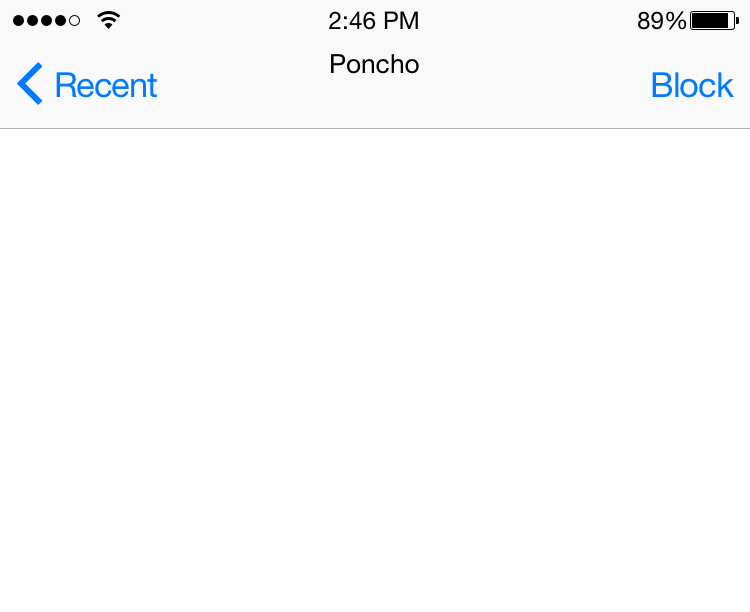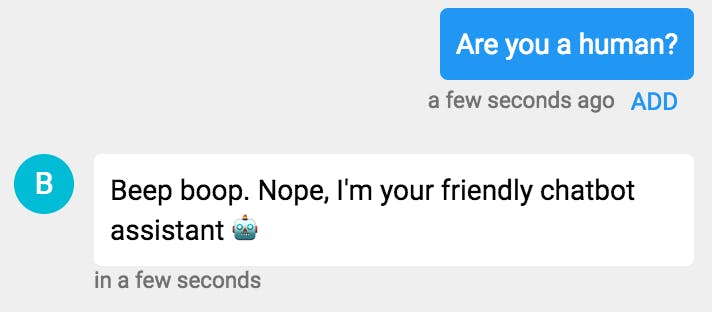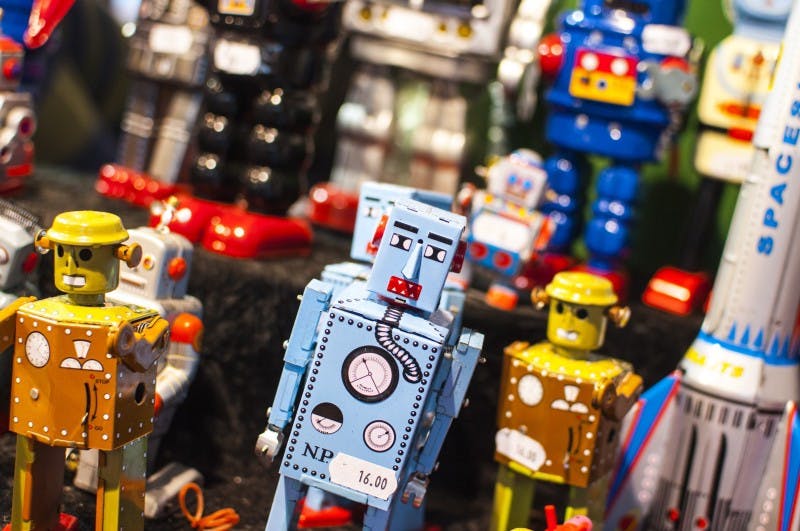When is the last time you interacted with a human and felt like you were interacting with a dull, lifeless creature whose only purpose is to fulfill your requests? I hope the answer is never, but I’m sure you can imagine how painful this conversation would be.
When we interact with another human, beyond whether or not we got what we wanted from the conversation, we remember the person behind the interaction and how we felt about interacting with them. This is true anywhere from making a complex financial decision to ordering a Big Mac. Successful human-human interactions involve humor, sarcasm and a mutual understanding of intent.
Why should your bot be any different?
The personality of your bot is one of the most important pieces of your user experience. Especially for a text-based bot. Consider how many times you have misunderstood messages from friends and family. This is because the majority of communication is not in the words you say, but more in how you say it. Tone and voice are crucial in ensuring that your end users are successfully using the bot to fulfill their requests.
The phrasing and tone that your bot uses will also be the first impression that your user has of the bot. Regardless of how well the bot serves their needs, how they felt interacting with the bot will be what they remember. Your bot’s personality is the difference between unforgettable and just another bot.
Developing a Personality
Getting started with your bot personality is easy. Think about the following questions:
How would you normally interact with your end users?How do they respond to that?How would your end users interact with each other?
Some conversations are sassy, others are quirky. Poncho solves a simple enough problem (tell me the weather), but keeps users coming back with its fun personality.

To find your bot’s personality, first, identify your target audience. The personality that will appeal to a 16-year-old is significantly different from that of a bot that will appeal to a 60-year-old. Consider also the jargon and industry-specific terminology that your target market uses.
Next, remember that you created your bot to fulfill a specific role. Don’t let its personality get in the way of that. A bot to fulfill customer service requests may not want to use the personality we saw with Poncho. But, this may work perfectly for other use cases.
Consider that users will respond to not only just the tone and voice of the bot. Bots are also allowed to make mistakes. A study found that bots that make mistakes gain more acceptance and sympathy from humans than those that perform their tasks perfectly. Design your bots with this in mind to make your users feel more comfortable. AI that performs without flaws may elicit feelings of resentment, but a bot that occasionally fumbles or has to repeat itself becomes a machine that’s a little bit “like us.”
Bots that make mistakes gain more acceptance and sympathy from humans.
Your bot’s personality will evolve over time, just like anything else that your user interacts with. If you’re having fun interacting with your bot (while it’s fulfilling it’s intended purpose, of course!), you’re on the right track.
Danger Zone
One word of caution on personality. End users are very against any bot that says it is a human. Bots are designed to fulfill a specific purpose. If your bot pretends to be human and the user pushes them beyond their limit, the trust that the user had for your organization is gone.
Imitating a personality is fine, but if your conversations at all resemble the following, fix that as soon as possible:

Instead, try something like this:

Adding a personality to your bot will vastly improve your bot user experience. Not to mention the fun that you can have doing it! Your users want to get what they need from the bot, and they want to feel good about while doing it. Your bot’s personality is the key to ensuring that people keep coming back.
Interested in building bots but not sure how to get started? Check out our developer tools that make building, training, and integrating your bot into messaging tools a breeze.
